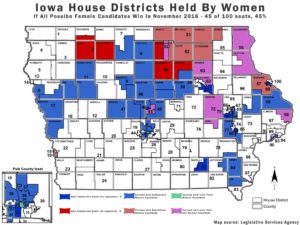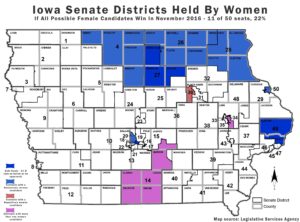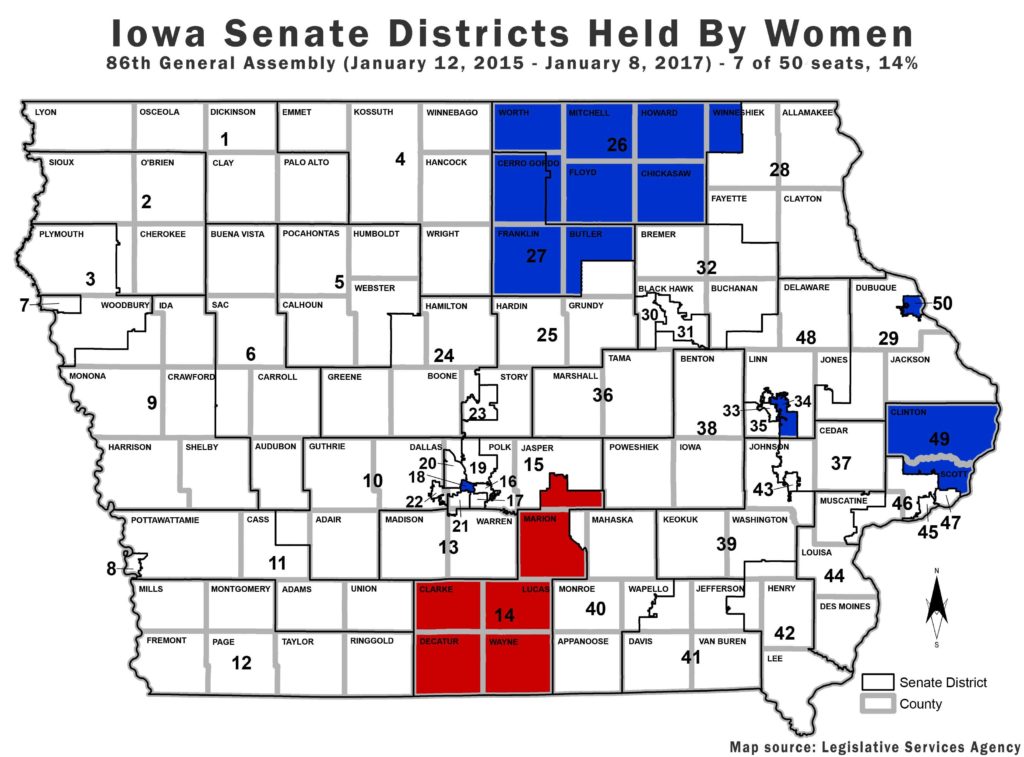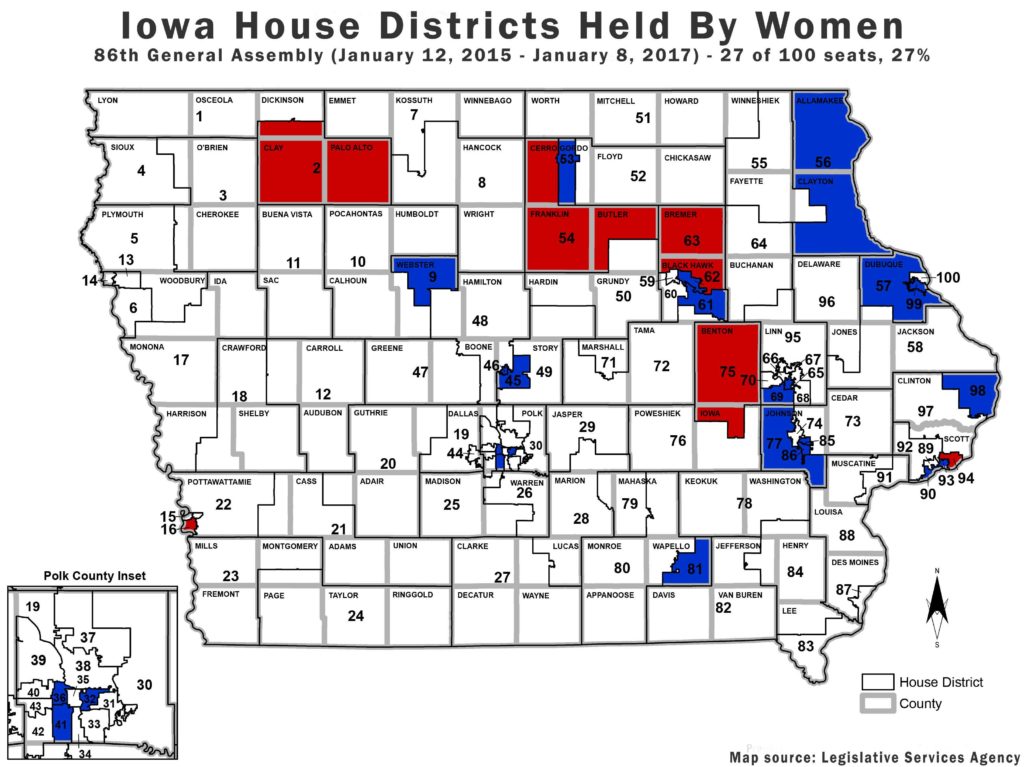You have heard that Iowa has a bumper crop of female candidates on the 2016 ballot? It’s true. But whether or not you have the opportunity to color in an oval next to the name of a woman running for the statehouse will most likely depend on where you live.
Statewide advocacy group 50-50 in 2020 has worked since the fall of 2010 in partnership with several other women’s organizations toward a goal of political equity in Iowa by the year 2020, which will be the 100th anniversary of women’s suffrage. So it was little wonder that this non-partisan group was the first to shout the news that 2016 was a historic year for women in politics.

“For nearly 100 years, since women in America got the right to to vote, female candidates have been the exception,” said Jean Lloyd-Jones, a 50-50 co-founder and former state senator from Iowa City.
She notes that the exception is getting closer to the rule. Women will appear on ballots statewide as candidates for president and the U.S. Senate. In two of the state’s four congressional districts, women are seeking election.
Adding to that excitement are the record-breaking numbers of women who hope to serve in the Iowa General Assembly. Maggie Tinsman, also a 50-50 co-founder and former state senator from Bettendorf, sees the increase as proof Iowans have growing acceptance for women running for office.
“Studies show that having more women involved in decision-making brings better problem-solving and better results — something we all want to see in our government as well as in society in general,” Tinsman said.

There are 11 women seeking election to eight seats in the Iowa Senate, and 51 battling in 45 Iowa House contests. And, since only even-numbered Senate districts are on the November ballot, there are two female senators, Amanda Ragan (District 27) and Rita Hart (District 49), who will automatically continue their work in the next general assembly.
By any measure, the influx of female candidates is a statewide boon, worthy of notice and celebration.
But even if women are elected to every statehouse seat they are seeking, Iowa will still fall short of political equity. The best possible outcome would increase female presence in the Iowa Senate from 14 percent to 22. The same scenario in the Iowa House would move the needle from 27 to 45 percent, just short of the 50 percent goal. Further, it is highly unlikely that every female candidate will be celebrating on election night.
In some races women compete against women and, in others, challengers stage uphill battles against incumbents, which Iowans historically favor at the ballot box.
But numbers alone don’t give a full picture of the state of women in Iowa politics.
When House and Senate districts held by female lawmakers are placed on a map, it becomes immediately evident that women politicians are also fighting against geography. Not only do rural pockets of the state lack female representatives in Des Moines, nearly all have been unsuccessful in fielding female candidates for this election.
To reach the 50 percent milestone, women advocates need to look West and go rural.


This column by Lynda Waddington originally published in The Gazette on September 3, 2016. Photo credit: Legislative Services Agency (blank map), Lynda Waddington (data)
